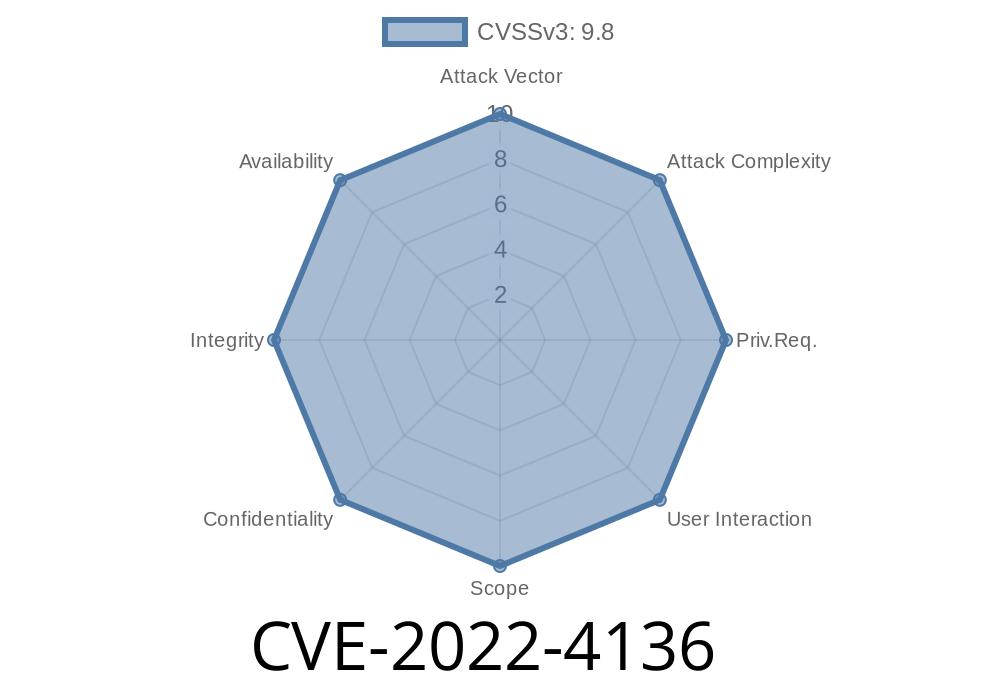A recently disclosed vulnerability, CVE-2022-4136, has been discovered in qmpass/leadshop v1.4.15 that poses a significant risk to organizations using this popular web application. This vulnerability exposes a dangerous method which, if exploited, can lead to Remote Code Execution (RCE) allowing an attacker to take control of the target host.
In this long-read post, we will take an in-depth look at the vulnerability, review the affected code snippet, and examine the exploit details. We will also provide relevant links to original references for those who wish to explore further.
The Vulnerability
CVE-2022-4136 specifically affects the leadshop.php file in qmpass/leadshop v1.4.15. The vulnerability occurs because the affected web application accepts user input via the GET method without proper sanitization, enabling an attacker to call any function within leadshop.php, potentially leading to RCE.
Let's look at the relevant code snippet from leadshop.php
$func = $_GET['function_name'];
if (function_exists($func)) {
call_user_func($func, $_GET['parameter']);
}
As you can see, the application accepts user input from the 'function_name' GET parameter and directly checks if the function exists using the function_exists() function, which is then called via call_user_func().
The Exploit
An attacker can exploit this vulnerability by crafting a malicious URL that calls any function within leadshop.php. To illustrate this, let's say there is a function deleteAll() in leadshop.php that deletes all records from the database without any checks or validation:
function deleteAll() {
// Code to delete all records from the database.
}
An attacker can craft the following malicious URL
http://victim.site/leadshop.php?function_name=deleteAll
When a user or administrator with permissions visits this URL, it will cause the application to call deleteAll() and delete all records from the database! This is just one example of the potential consequences of exploiting this vulnerability; it could also be used to achieve RCE and compromise the entire server, depending on the available functions within leadshop.php and the environment.
For more information on CVE-2022-4136, you can refer to the following sources
1. The qmpass/leadshop GitHub repository: https://github.com/qmpass/leadshop
2. The CVE Details page: https://www.cvedetails.com/cve/CVE-2022-4136/
3. The National Vulnerability Database (NVD) entry: https://nvd.nist.gov/vuln/detail/CVE-2022-4136
Conclusion
CVE-2022-4136 highlights the importance of proper input validation and sanitization when developing web applications, especially when dealing with sensitive functions that can impact system security. Protecting your organization from dangerous vulnerabilities like this one is essential to maintaining the safety and integrity of your digital assets and infrastructure.
To ensure your web applications are secure, always follow best practices and keep your software up-to-date by applying security patches as they become available. Regularly performing security audits and penetration tests can also help you identify and mitigate vulnerabilities before they can be exploited by attackers.
Timeline
Published on: 11/24/2022 08:15:00 UTC
Last modified on: 11/30/2022 19:52:00 UTC
